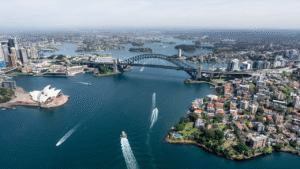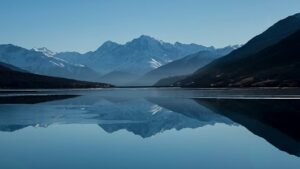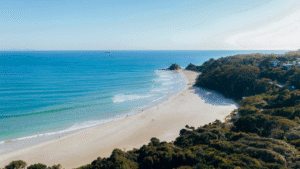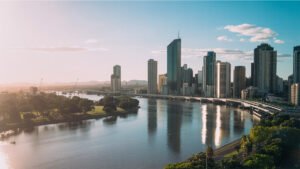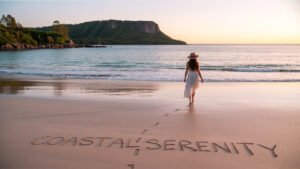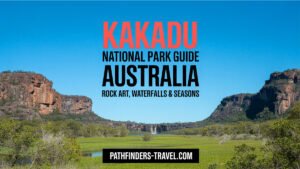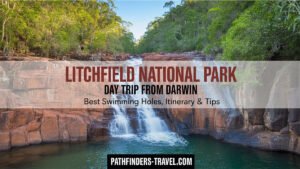Estimated reading time: 15 minutes
Key Takeaways
- Cairns serves as the perfect gateway to North Queensland’s tropical adventures, including the Great Barrier Reef and Daintree Rainforest.
- The Kuranda Scenic Railway and Skyrail Rainforest Cableway offer complementary experiences – combining both provides the most comprehensive rainforest experience.
- The Daintree Rainforest, one of Earth’s oldest rainforests at 135 million years old, offers incredible biodiversity and unique ecosystems.
- Mossman Gorge provides accessible walking trails through ancient rainforest with crystal-clear streams and massive granite boulders.
- Cape Tribulation is the rare place where two World Heritage sites meet – the ancient rainforest literally meets the Great Barrier Reef.
Table of Contents
- Introduction
- Welcome to Cairns
- Kuranda Scenic Railway vs Skyrail Experience
- A Comprehensive Daintree Rainforest Guide
- Cape Tribulation – Where the Rainforest Meets the Reef
- Practical Tips & Planning Your Trip
- Frequently Asked Questions about Cairns & Rainforests
- Conclusion
Introduction
Welcome to our Cairns travel guide, your passport to the adventure of a lifetime. Located in tropical North Queensland, Cairns stands as the perfect entry point to some of Australia’s most breathtaking natural wonders. This vibrant coastal city opens the door to not one but two UNESCO World Heritage sites: the magnificent Great Barrier Reef and the ancient Daintree Rainforest.
In this guide, we’ll take you through the must-see attractions and activities that make Cairns a world-class destination. You’ll discover the famous Kuranda Scenic Railway vs Skyrail debate and learn which experience might suit your travel style best. We’ll also venture into lush rainforests for immersive nature walks and wildlife encounters that will leave you with lasting memories.
Whether you’re planning your first visit to Australia or returning to explore more of its natural treasures, Cairns offers the perfect blend of adventure, relaxation, and natural beauty that makes for an unforgettable journey.
Want to see this for yourself? Click here to jump to the video in UHD 4K Resolution.
Welcome to Cairns
Nestled between the Coral Sea and rainforest-covered mountains, Cairns has established itself as a dynamic hub for adventure seekers and nature lovers from around the world. With its year-round tropical climate and relaxed atmosphere, this coastal city serves as the perfect base for exploring North Queensland’s natural wonders. [SOURCE]
What makes Cairns truly special is its unique blend of laid-back coastal vibes and access to some of Australia’s most spectacular natural attractions. To the east lies the Great Barrier Reef, the world’s largest coral reef system teeming with marine life. To the north and west stretch ancient rainforests that have existed for millions of years, home to some of the planet’s most diverse ecosystems. [SOURCE]
The city itself boasts excellent traveler-friendly infrastructure, making it easy to navigate and enjoy. The Esplanade Lagoon, a free public swimming pool overlooking the harbor, offers a safe swimming alternative to the ocean. The Cairns Night Markets showcase local crafts, foods, and souvenirs, while the Botanic Gardens provide a peaceful retreat with tropical plants from around the world. [SOURCE]
For those looking to connect with local culture, Cairns offers numerous opportunities to learn about Aboriginal heritage through cultural centers and guided tours. The city also serves as a gateway to Whitsunday Islands, another tropical paradise just a short journey away.
Kuranda Scenic Railway vs Skyrail Rainforest Cableway Guide
When visiting Cairns, two of the most iconic experiences await in the rainforest-covered mountains: the historic Kuranda Scenic Railway and the modern Skyrail Rainforest Cableway. Both offer unique ways to access the charming village of Kuranda while showcasing the beauty of the ancient rainforest from different perspectives. [SOURCE]
Comparing the Experiences
The Kuranda Scenic Railway, built between 1882 and 1891, represents a remarkable feat of engineering. This historic train winds its way through 15 hand-carved tunnels and across 37 bridges, climbing from Cairns up to Kuranda village through stunning rainforest terrain. The journey takes approximately 1 hour and 45 minutes, with commentary highlighting the cultural and natural significance of the landscape. The railway offers standard class and premium Gold Class options, with the latter including refreshments and more spacious seating.
In contrast, the Skyrail Rainforest Cableway provides a bird’s-eye view of the same rainforest. Gliding silently above the canopy in gondolas that seat up to 6 people, this 7.5km journey offers unparalleled panoramic views. The trip takes about 1.5 hours if you stop at both mid-stations (Red Peak and Barron Falls), where rangers offer guided boardwalk tours. For photography enthusiasts, Diamond View gondolas with glass floor panels are available for an additional fee.
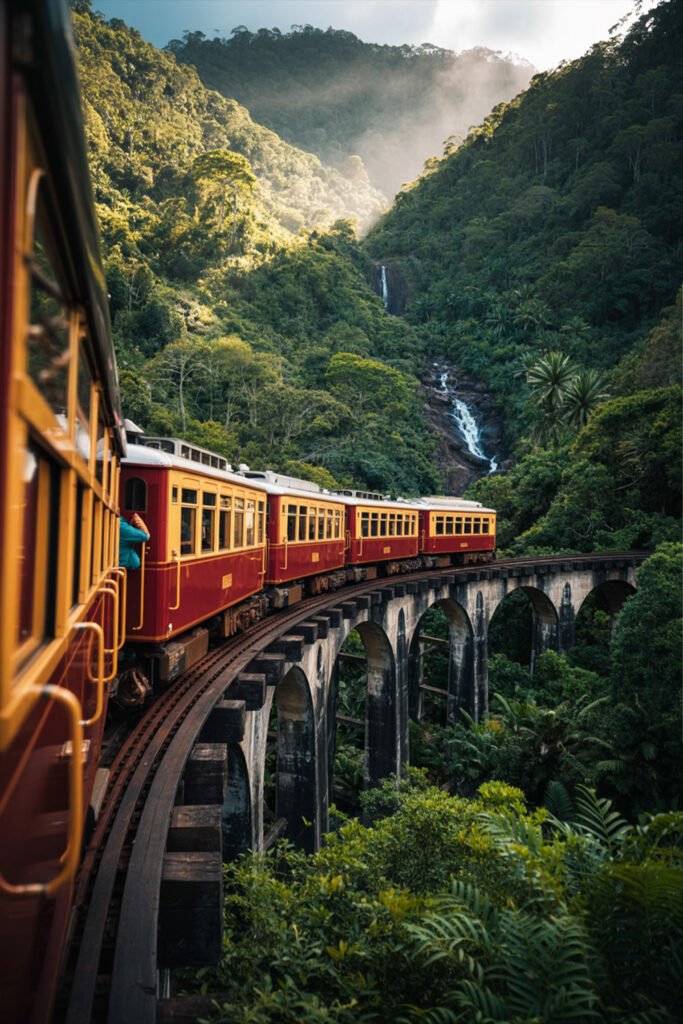
Pros and Cons
Here’s a helpful comparison to help you decide which experience might suit you better:
Kuranda Scenic Railway
- Pros: Rich historical experience; spectacular waterfall views; comfortable seating; Gold Class option with refreshments; great for train enthusiasts and history buffs
- Cons: Fixed schedule with limited departure times; less flexibility for spontaneous travelers; can get crowded during peak season
Skyrail Rainforest Cableway
- Pros: Breathtaking aerial views; flexible departure times; interactive rainforest stations; Diamond View gondolas for enhanced viewing; generally quieter experience
- Cons: Not suitable for those with fear of heights; affected by strong winds and weather conditions; slightly more expensive for premium options
While both experiences have their unique appeal, many visitors to Queensland agree that the best approach is to combine both—taking the train one way and the Skyrail the other. This provides the most comprehensive experience of the rainforest from both historical and panoramic perspectives. [SOURCE]
Daintree Rainforest Guide with Mossman Gorge and River Tours
The Daintree Rainforest stands as one of Earth’s oldest continuously surviving rainforests, with sections dating back an astonishing 135 million years. This ancient ecosystem is home to an incredible diversity of plant and animal species, many found nowhere else on the planet. The Daintree’s rich biodiversity includes over 3,000 plant species, 30% of Australia’s frog species, 65% of butterfly species, and 20% of bird species—all within just 0.2% of Australia’s landmass. [SOURCE]
This living museum offers visitors a glimpse into Earth’s evolutionary past, with primitive plant species that have remained virtually unchanged for millions of years. The Daintree’s significance is recognized through its UNESCO World Heritage listing as part of the Wet Tropics of Queensland.
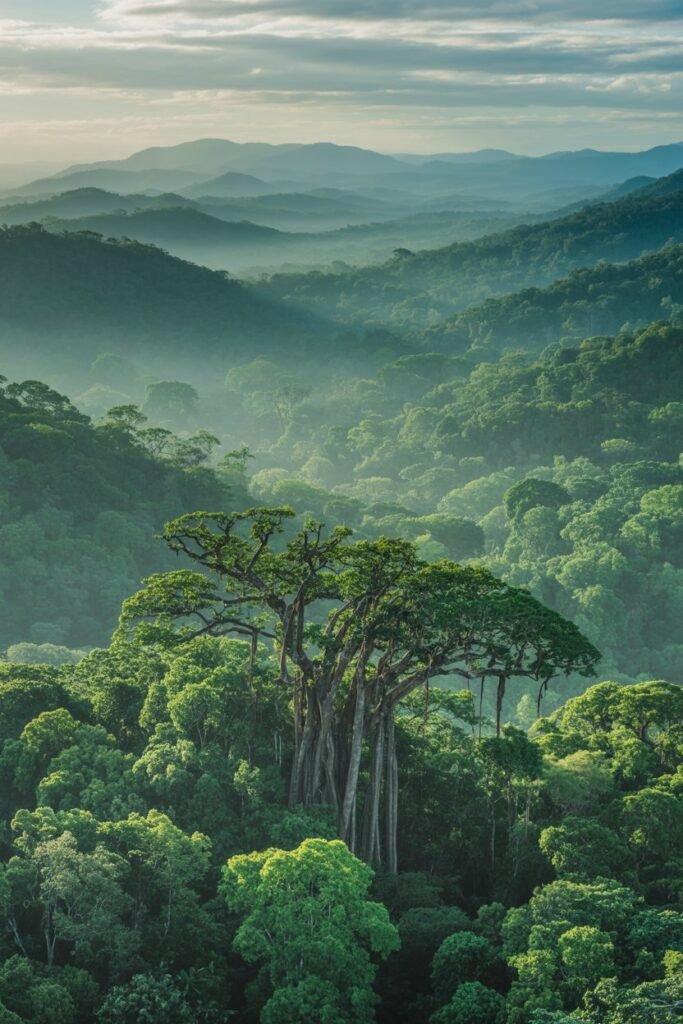
Mossman Gorge Walk
One of the most accessible and rewarding experiences in the Daintree rainforest guide is the Mossman Gorge Walk. Located in the southern section of the Daintree, this area features crystal-clear streams flowing over ancient granite boulders amidst lush tropical vegetation. [SOURCE]
The Mossman Gorge Centre serves as the gateway to this natural wonder, offering cultural displays and a shuttle service that transports visitors into the gorge itself. From there, several walking tracks of varying lengths allow you to explore at your own pace:
- The Rainforest Circuit Track (2.4km) – A moderately easy loop through stunning rainforest scenery
- The Baral Marrjanga track (270m) – A shorter accessible track leading to a lookout
- Access to the swimming hole – Where visitors can cool off in the crystal-clear waters
What makes the Mossman Gorge particularly special is its Indigenous cultural significance. The area is the traditional homeland of the Kuku Yalanji people, who offer guided Dreamtime Walks that share their connection to this sacred place through stories, traditional plant uses, and ancient customs.
The best time to visit is early morning when wildlife is most active and crowds are thinner. The gorge is most comfortable during the dry season (May to October) when water levels are lower and the paths less slippery.
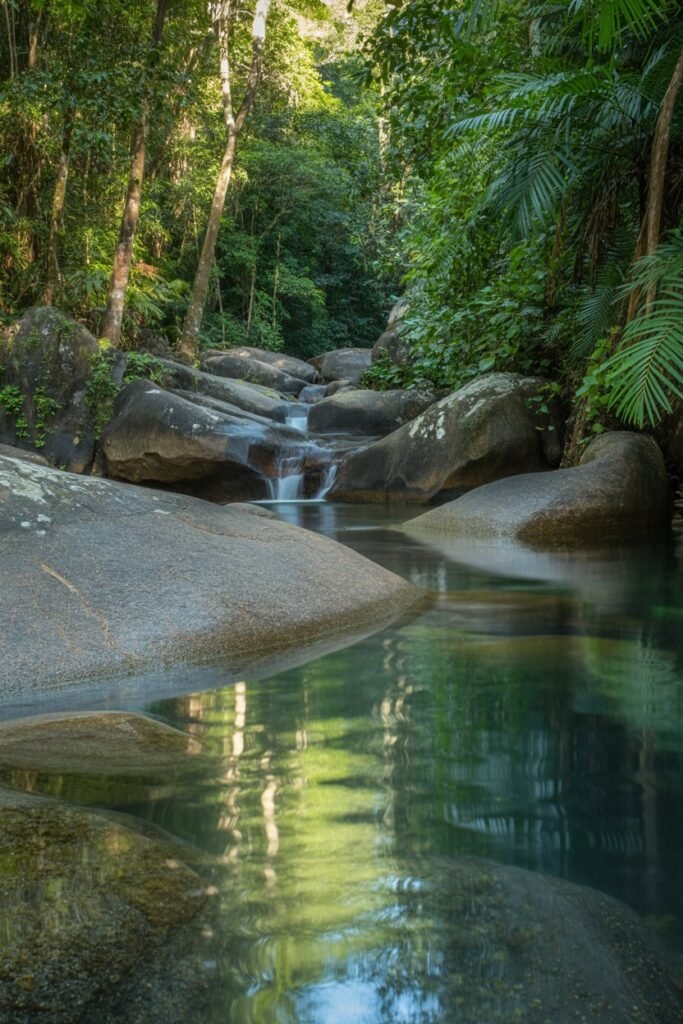
Daintree River Crocodile Tour
No visit to the Daintree would be complete without experiencing a Daintree River crocodile tour. These guided boat excursions provide the thrilling opportunity to spot estuarine crocodiles (saltwater crocodiles) in their natural habitat. [SOURCE]
These tours typically last 1-2 hours and are led by knowledgeable guides who can identify wildlife and explain the complex river ecosystem. Beyond crocodiles, you’ll likely spot unique bird species, tree snakes, and the distinctive mangrove forests that line the riverbanks.
Safety is paramount on these tours, and reputable operators maintain excellent safety records. When selecting a tour, look for:
- Small group sizes for better viewing opportunities
- Eco-accreditation certifying sustainable practices
- Experienced guides with deep knowledge of the river system
- Early morning or late afternoon departures when wildlife is most active
The Daintree River forms the natural boundary of the Daintree National Park, and crossing it via the cable ferry marks your entry into one of the most pristine wilderness areas on Earth. This crossing is an experience in itself, connecting travelers to the more remote northern sections of the Daintree and pristine beaches of Cape Tribulation.
Cape Tribulation Travel Guide Rainforest and Reef Convergence
Cape Tribulation represents a rare natural phenomenon – one of the few places on Earth where two World Heritage sites exist side by side. Here, the ancient Daintree Rainforest literally meets the Great Barrier Reef, creating a dramatic and beautiful coastal landscape where verdant rainforest spills onto pristine beaches that lead directly to coral reefs. [SOURCE]
This unique convergence of ecosystems creates stunning visual contrasts – dark green rainforest canopy against white sandy beaches and the turquoise waters of the Coral Sea. The name “Cape Tribulation” was given by Captain James Cook in 1770 after his ship ran aground on nearby reefs, but today’s visitors find much more delight than tribulation in this natural paradise.
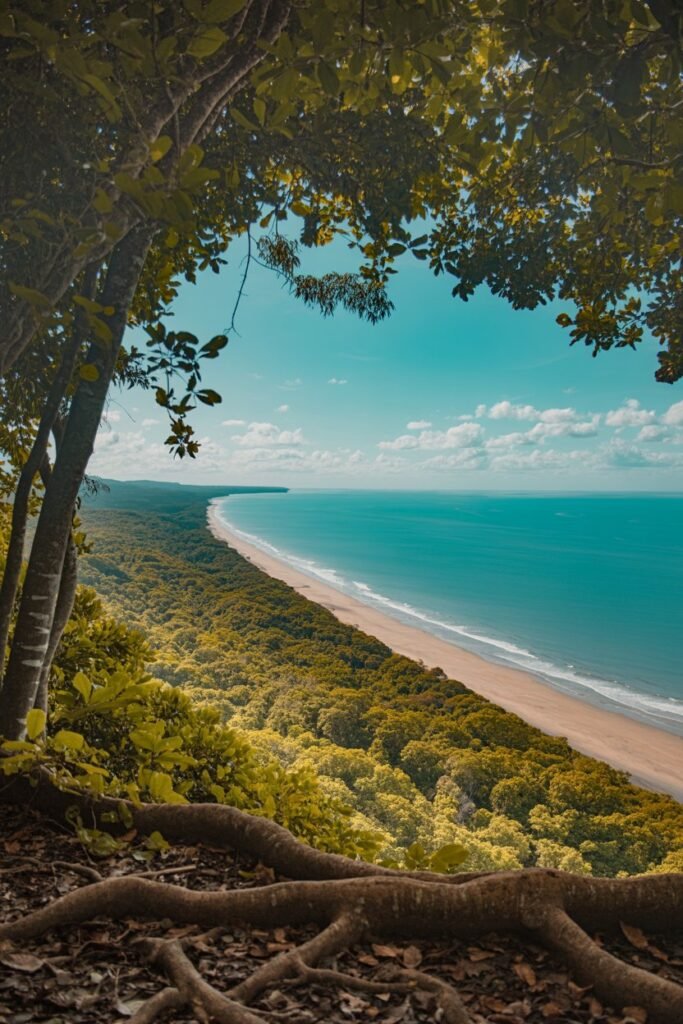
The cape offers a range of activities that showcase both the terrestrial and marine environments:
- Beach walks along pristine coastlines where the rainforest canopy provides natural shade
- Boardwalk trails that wind through mangroves and lowland rainforest
- Low-tide reef walks to explore the fringing coral reef (with proper guidance)
- Guided night walks to spot nocturnal wildlife like the endangered cassowary
- Horse riding tours through rainforest trails and along beach sections
- Kayaking excursions that provide a unique perspective from the water
The Dubuji Boardwalk and Marrdja Botanical Walks are particularly informative, with interpretive signs explaining the ecological significance of this transition zone between rainforest and reef. For those seeking a more immersive experience, several eco-lodges are nestled within the rainforest, offering accommodation with minimal environmental impact.
What makes Cape Tribulation particularly valuable from an ecological perspective is the direct relationship between these two ecosystems. The rainforest provides filtration for water runoff that might otherwise damage the delicate reef, while the reef offers protection to the coastline during tropical storms. This interdependence creates a unique environment where specialized species have evolved to thrive in this transition zone.
While exploring coastal Queensland, Cape Tribulation stands out as a destination that encapsulates the natural beauty and ecological significance that makes this region so special.

Practical Travel Tips for Cairns Kuranda and Cape Tribulation
Planning your Cairns travel adventure requires some preparation to make the most of your experience. Here are essential tips to help you organize a seamless journey through this tropical paradise.
Best Time to Visit
The dry season (May to September) offers the most comfortable weather conditions for exploring Cairns and its surroundings. During these months, you’ll enjoy lower humidity, minimal rainfall, and average temperatures between 17-26°C (63-79°F). This period is ideal for outdoor activities, with clear visibility for snorkeling and diving on the Great Barrier Reef. [SOURCE]
The wet season (November to April) brings tropical downpours, higher humidity, and temperatures ranging from 23-31°C (73-88°F). While accommodation prices may be lower during this time, some tours and attractions might operate on limited schedules due to weather conditions. However, the rainforest is particularly lush and waterfalls are at their most spectacular during these months.
Booking Tips
Advance planning is crucial, especially during peak tourist seasons (June to August and around Australian school holidays):
- Book Kuranda Scenic Railway and Skyrail tickets at least 2-3 weeks in advance during peak season
- Consider combined tickets for both experiences to save money and guarantee availability
- Morning departures are recommended for cooler temperatures and better wildlife spotting opportunities
- Reserve accommodation 3-6 months ahead if visiting during Australian school holidays or peak season
For the best value, look into package deals that combine multiple attractions. Many tour operators offer discounts when booking multiple experiences together. [SOURCE]
Essential Items to Pack
The tropical climate and outdoor activities in Cairns require specific items:
- Sun protection: High-SPF sunscreen (reef-safe if you’re visiting the Great Barrier Reef), wide-brimmed hat, sunglasses
- Insect repellent: Essential for rainforest walks and evening activities
- Lightweight, breathable clothing: Quick-dry fabrics are ideal
- Rain jacket or poncho: Even in the dry season, short showers can occur
- Sturdy walking shoes: For rainforest trails and uneven terrain
- Swimming gear: For reef excursions, Mossman Gorge, and the Cairns Esplanade Lagoon
- Reusable water bottle: Stay hydrated in the tropical climate
Transportation Options
Getting around Cairns and its attractions is relatively straightforward:
From Cairns to Kuranda: The most scenic options are the Kuranda Scenic Railway or Skyrail. Alternatively, you can drive (about 30 minutes) or take a public bus from Cairns.
To the Daintree and Cape Tribulation: You have several options:
- Self-drive: The drive from Cairns to the Daintree River is approximately 2 hours, with another hour to Cape Tribulation after crossing the ferry. The roads are well-maintained, but a 4WD vehicle is recommended for some sections north of the river.
- Guided tours: Numerous operators offer day trips or multi-day tours from Cairns, with transportation included.
- Shuttle services: Regular shuttle buses run between Cairns, Port Douglas, and the Daintree region.
For getting around Australia’s east coast, having your own vehicle provides the most flexibility for exploring at your own pace.
Booking Resources
For reliable bookings and information, consider these resources:
- The Cairns Visitor Information Centre offers neutral advice on local attractions and can help with bookings
- Reputable online booking platforms like Experience Oz, Viator, or Get Your Guide often offer competitive rates
- Direct booking through official attraction websites sometimes provides exclusive deals or flexible cancellation policies
- Local tour specialists can create customized itineraries based on your interests and timeframe
When booking tours to sensitive ecological areas like the Daintree, look for operators with Advanced Ecotourism Certification to ensure they follow sustainable practices. [SOURCE]
Frequently Asked Questions about Cairns & Rainforests
When is the best season to visit Tropical North Queensland for travel comfort and outdoor activities?
The ideal time to visit is during the dry season, from May to October, when temperatures are mild (17–26 °C / 63–79 °F), rainfall is low, and visibility for snorkeling, diving, and rainforest walks is excellent.
How can I safely experience wildlife, especially crocodiles, in the Daintree Rainforest?
Crocodile-spotting tours on the Daintree River offer a thrilling but safe way to observe these creatures in their natural habitat. Choose operators with small group sizes, eco-accreditation, and experienced guides. Early morning and late afternoon tours increase chances of wildlife sightings, while minimizing disturbance to the ecosystem.
Should I take the Kuranda Scenic Railway, the Skyrail Cableway, or both?
The Kuranda Scenic Railway delivers a historic journey through lush rainforest with tunnels and waterfalls, while the Skyrail Cableway offers panoramic aerial views and rainforest boardwalk experiences. Many travelers prefer taking one one-way and returning via the other—this combination delivers a richer perspective of the Wet Tropics’ beauty and engineering marvels.
What should I pack for exploring rainforests, reef areas, and tropical weather?
Packing list essentials include reef-safe sunscreen, wide-brimmed hat, sunglasses, and insect repellent; lightweight quick-dry apparel and sturdy walking shoes for rainforest trails; a rain jacket or poncho for sudden seasonal showers; swimming gear for reef and gorge dips; and a reusable water bottle to stay hydrated in the humid environment.
What transport options are recommended for visiting Cairns, the Daintree, Kuranda, and Cape Tribulation?
Cairns is a well-connected gateway with its international airport and public bus hub. To reach Kuranda, consider the scenic train or the Skyrail cableway—or self-drive. For Daintree and Cape Tribulation, a full-day tour, guided shuttle, or self-drive (with ferry crossing at the Daintree River) works well; a 4WD is useful for northern roads beyond the ferry, but regular vehicles are fine for most of the journey.
Conclusion
Cairns truly stands out as the gateway to North Queensland’s most remarkable natural wonders. From the historic charm of the Kuranda Scenic Railway vs Skyrail Rainforest Cableway to the ancient beauty of the Daintree Rainforest guide with Mossman Gorge Walk and Daintree River crocodile tour, every step immerses travelers in breathtaking scenery and unique ecosystems. Add in the rare coastal marvel of Cape Tribulation where the rainforest meets the reef, and this region offers one of the most diverse adventure experiences in all of Australia.
This Cairns travel guide highlights not just world-famous attractions but also the small details that make a journey here unforgettable—rainforest walks, crystal-clear streams, and coral reefs teeming with life. Whether you’re planning your first visit or returning for a deeper exploration, Cairns and its surroundings deliver the perfect balance of adventure, relaxation, and discovery.
If you’d like to see these destinations come alive in cinematic 4K, visit my Pathfinders Travel YouTube channel where I share full travel documentaries that explore Cairns, the Great Barrier Reef, and other wonders of the world. Click here to watch now.


